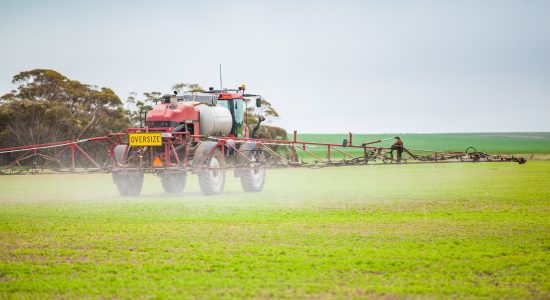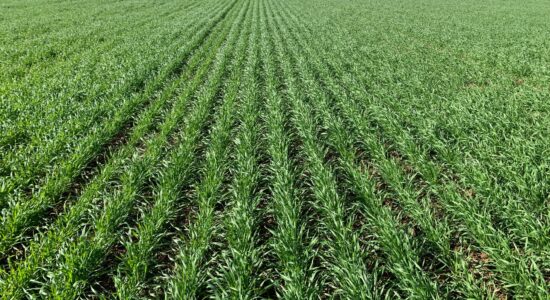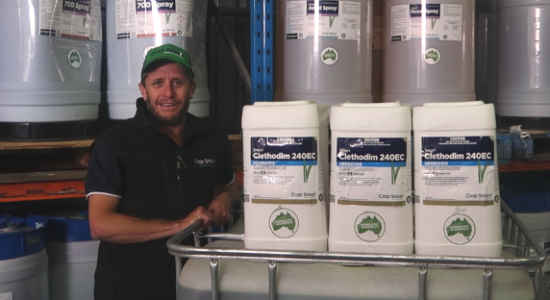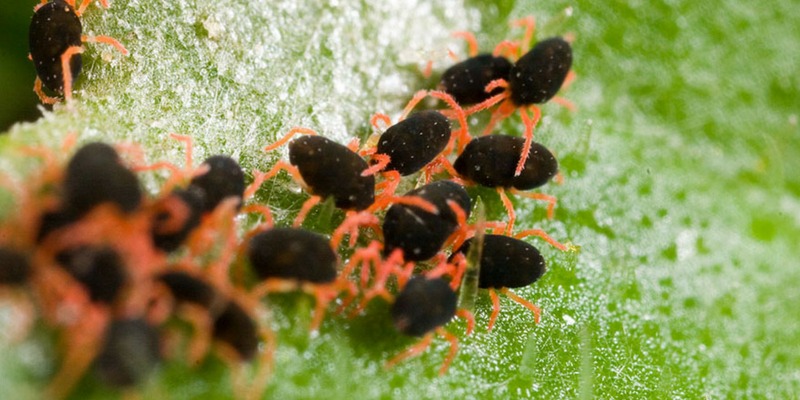
Monitoring emerging crops for insect pests
As crops begin to emerge, along with recent rainfall and changing seasonal conditions, it is likely to trigger a burst of activity from a range of insect pests. With emerging crops being the most susceptible to damage, it is vital to regularly check for pests to ensure your crops get a healthy start. To assist with monitoring, the Smart Agro has put together a list of common insect pests to be on the lookout for.
Redlegged earth mite
Egg hatchings of the redlegged earth mite will be occurring in each region depending on the differing cool conditions and rainfall.
Redlegged earth mite (Halotyudeus destructor, RLEM) activity is predominantly subject to localised environmental conditions. This pest survives between winter-cropping seasons as over-summering eggs, which will only hatch under specific conditions in autumn.
Generally, the process of egg development and autumn hatching requires at least 5mm of rainfall accumulated over five consecutive days or less, followed by 10 days of average daily temperatures remaining below 16°C, which we’ve recently encountered in some areas across the southern cropping region.
Conveniently for the RLEM, this coincides with the establishment of their host crops, which means monitoring early emerging seedling crops is critical to avoid losses and economic damage. This can be further exacerbated in dry conditions or when plants are stressed e.g. herbicide damage, cold conditions, sown too deep, etc.
A wet April in a lot of areas, has meant the hatchings of RLEM are on time, this paired with cooler conditions and some rain arriving, means peak egg hatchings are likely to happen soon and in some environments, have already occurred.
With insecticide resistance in the RLEM now present in the southern cropping region, insecticide stewardship should be high on the priority list. That means not using the same insecticide mode of action groups across successive spray windows (on multiple generations of mites) and reserving co-formulations (or chemical mixtures) for situations where damaging levels of pests are present, and a single active ingredient is unlikely to provide adequate control.
Please click here to read about resistance management strategy for RLEM in Australian grains and pastures and see below for the average RLEM life cycle from Cesar Australia.
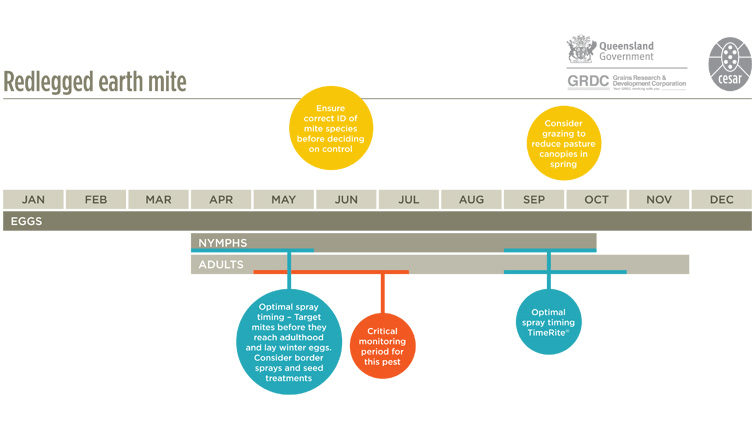
Identifying aphids in canola
Distinguishing aphid species in canola is not always that obvious! Here are some key poinst to consider when identifying these aphids in the field:
- Green peach aphid (myzus persicae, GPA), cabbage aphid (brevicoryne brassicae), and turnip aphid (lipaphis pseudobrassicae), are the three main insects that feed on and transmit viruses (like turnip mosaic virus) in canola in south-eastern Australia. It’s important to distinguish between these species as unlike cabbage and turnip aphid, GPA has evolved resistance to major chemical groups creating a truly unique management strategy.
- It’s not uncommon for multiple species to be present in the one canola crop. GPA can be difficult to find and go under the radar amongst turnip aphid or cabbage aphid which can lead to costly control failures because of incorrect insecticide selection due to current resistance to Synthetic Pyrethroids groups. For example, Pirimicarb will control cabbage aphid and turnip aphid but will not kill GPA, even at high rates. Colonisation habits and appearance are two areas which can assist with correct identification of these canola pests.
- Turnip and cabbage aphid are known to colonise upper leaves and form clusters on canola flowering spikes later in the spring months of more advanced crops. However, GPA prefer to inhabit the lower underlying leaves and are more sparsely distributed. It’s extremely important to inspect the underside of the early cabbaging canola leaves to check for GPA distribution and remember to control common summer weeds such as wild radish, wild turnip, marshmallow, nightshade species, fleabane, afghan melons and stinkweed/stinkwort which act as a carryover summer bridge to host GPA survival.
- Cabbage aphid colonies have a characteristic blue-grey appearance and are often covered in a whitish powder. Turnip aphid colonies are typically olive to greyish-green and covered with a white wax, although not as obvious as that on the cabbage aphid. Sometimes dark bars are visible on the abdomen of the turnip aphid and cabbage aphid.
- Green peach aphid varies in colour from shiny pale yellow-green, green, orange or pink. If viewed closely, GPA has a shimmery appearance, however generally it predominately colonises on the underside of the canola leaf.
 Redlegged earth mite adults
Redlegged earth mite adults Multiple aphids
Multiple aphids Turnip aphid adult
Turnip aphid adult
The Smart Agro



